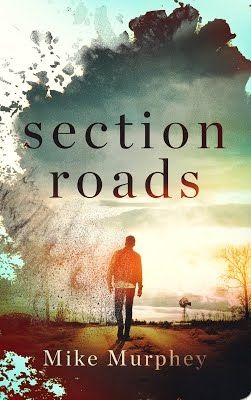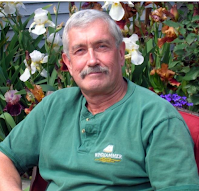
Coming
of Age / Mystery / Humor
Date
Published: June 8, 2019
Publisher:
Acorn Publishing
When
attorney Cullen Molloy attends his fortieth high school reunion, he doesn’t
expect to be defending childhood friends against charges of murder…
In
a small town on the high plains of Eastern New Mexico, life and culture are
shaped by the farm roads defining the 640-acre sections of land homesteaders
claimed at the turn of the Twentieth Century. Cullen and Shelby Blaine explore
first love along these section roads during the 1960’s, forging a life-long
emotional bond.
As junior high school band nerds, Cullen
and Shelby fall under the protection of football player and loner, Buddy Boyd.
During their sophomore year of high school, Buddy is charged with killing a
classmate and is confined to a youth correctional facility. When he returns to
town facing the prospect of imprisonment as an adult, Cullen becomes Buddy’s
protector.
The case haunts the three friends into
adulthood, and it isn’t until their fortieth reunion, that they’re forced to
revisit that horrible night. When a new killing takes place, Cullen, Shelby and
Buddy find themselves reliving the nightmare.
Murder is an easy thing to hide along
old country section roads.
Advance
Praise
“An
ambitious, evocative small-town tale located somewhere between Peyton Place and
The Last Picture Show.” –Kirkus Review
Read
the Full Review
Read a teaser
July 2009 Friday
“I’ll ride with Buddy,” Shelby whispered. “Do you mind? It’ll give us a
chance to talk.”
“No, I think that’s a good idea.”
Cullen lifted his eyebrows, which Shelby dismissed with a wave.
Buddy
stood a little apart from them at the Enterprise counter. They’d been through
the greeting rituals. A hug for Shelby, which she returned with a kiss to his
cheek. A polite, interested handshake with Lori.
Cullen and Lori left them and began an hour-long drive through the
agricultural blight of West Texas.
“So, what’s the deal with Buddy?”
Lori asked. “I know you worked together a long time ago, but you really haven’t
talked much about him.”
They drove along a paved road—an impossibly straight line heading north.
Deep green alfalfa fields alternated with stubby rows of cotton and weedy,
untilled soil bank every few miles forming a pattern replicating itself off
into a horizontal infinity. Heat waves shimmered along the pavement. From the
soil bank, dust and debris climbed columns of rising, swirling air.
At the age of five, Cullen came to believe these thermal dust devils were
pathways for souls fleeing to heaven. He believed this because on the summer
day his grandmother was buried at a rural cemetery with brown grass and a few
gnarled, wind-battered elms, one of these dust devils sprang from an
uncultivated field across the road and as it grew—sucking dirt and paper and
tumbleweeds along—passed over the mounded red earth marking the new grave. A
spurt of dust leaped from the mound, painting a segment of the great undulating
pillar a pale rosy shade. This pink apparition climbed as the thermal moved
across the cemetery, finally disappearing into a hot, whitish-blue, eastern New
Mexico sky.
Dust devils always made Cullen think of the people he loved who were no
longer alive. His mother and father rested with his grandmother at that same
cemetery.
Cullen had a ready description when his friends asked him about his home
town. Arthur, New Mexico, along with hardscrabble oil patch towns like Hobbs,
Artesia, Midland and Odessa, was located on a high plane called Llano Estacado which, Cullen originally
speculated, was Spanish for something like really
windy dry flat place.
Occupying Eastern New Mexico and
Northwest Texas, the region is characterized by hot blustery summers and even
colder blustery winters. The wet part of the Llano received barely twenty
inches of rain during a good year. “Arthur,” Cullen would note, “is in the dry
part.”
Bleak as they might be, the Hobbses, Odessas and Artesias of the world
were at least plopped down atop semi-vast underground puddles of oil. Not
Arthur. Not a drop. If tumbleweeds had been a cash crop, though, the
homesteaders would have prospered.
Arthur and Arthur County were named for Chester A. Arthur, America’s
twenty-first president. Researching a junior high school history assignment,
the most compelling facts Cullen found about him were that Arthur was America’s
fifth fattest president and owned eighty pairs of pants.
The community of eight thousand—at an elevation of four thousand feet
above sea level—had nothing geographical, like a river or a canyon or an oasis,
to warrant its location.
Arthur just was.
The flat monotony spread in every direction. “Given a clear day,” Cullen
was fond of saying, “you could climb a six-foot stepladder and see the earth
curve.”
He often puzzled over the pioneers’ judgment. Certainly, more attractive
locations waited further west. He supposed the settlers might have been tired
and stopped to rest, thinking they would wait for a good rain to replenish
their water supplies before they moved on. And when the livestock had all died
of thirst, they were stuck.
Still, despite this hardship, there grew a civilization defined
geographically by dirt roads that formed the borders of all those perfectly
square six hundred and forty-acre sections of land claimed by early twentieth
century homesteaders.
As Cullen composed his answer to Lori’s query about Buddy, he thought of
those section roads, and all the ways straight lines and straight laces had
twisted the paths of this small group of friends.
“I told you about Christy Hammond, didn’t I?” Cullen answered. “The girl
who was shot to death our sophomore year?”
Lori gave a little gasp. “That was Buddy? Oh, no. And he went to jail?”
“Juvenile detention. He pled guilty to manslaughter. They kept him until
his eighteenth birthday. They took him away in November of 1966. He came back
May of 1969.”
“At least he got to come back.”
Cullen gave a rueful laugh and shook his head.
“No, that was part of the punishment. A lot of people thought he should
have been charged with murder. They thought he should have been sent away for
life. When the judge didn’t agree, half the town was furious at the injustice
of it all. Christy’s uncle is a lawyer. He convinced juvenile court authorities
to make Buddy finish high school here as a condition of his release.”
“But why would they—”
“It was their last shot at punishing him,” Cullen said. “They had a few
weeks to give him hell when they knew he couldn’t fight back.”
About
the Author

Mike
Murphey is a native of eastern New Mexico and spent almost thirty years as an
award-winning newspaper journalist in the Southwest and Pacific Northwest.
Following his retirement from the newspaper business, he and his wife Nancy
entered in a seventeen-year partnership with the late Dave Henderson, all-star
centerfielder for the Oakland Athletics, Boston Red Sox and Seattle Mariners.
Their company produces the A’s and Mariners adult baseball Fantasy Camps. They
also have a partnership with the Roy Hobbs adult baseball organization in Fort
Myers, Florida. They love baseball, fiction, cats and sailing. They split their
time between Spokane, Washington, and Phoenix, Arizona. Mike enjoys life as a
writer and old-man baseball player.
Contact
Links
Purchase
Links



thanks for hosting
ReplyDelete